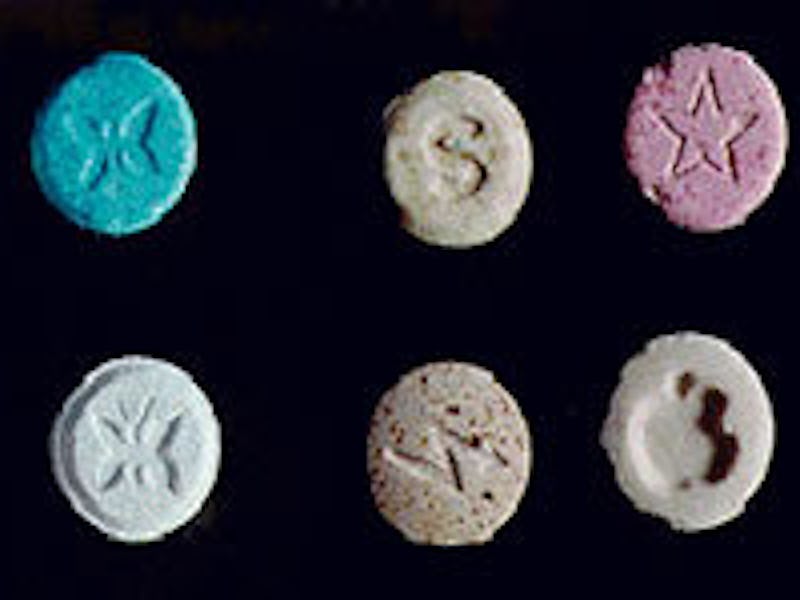Hair Test Reveals All the Drugs Actually Hiding in Ecstasy Pills
'I don't use bath salts; I'm not a cannibal.' Or so users think.

If you’re at a rave in New York City, a man named Joseph Palamar might ask you for a hair sample. Don’t worry, he’s not part of a drug-induced bad trip; Palamar is a professor of population health at New York University, and he tests people’s hair at parties to find out what’s actually in the drugs they’re taking.
In a paper in the October issue of the International Journal of Drug Policy, Palamar and his colleagues demonstrate that about 50 percent of the people they interviewed at electronic dance music parties in New York City during the summer of 2016 had taken ecstasy pills or powdered molly that contained drugs they didn’t realize were present.
“I expected most molly users to test positive for drugs they didn’t report using,” Palamar tells Inverse. “But what I find alarming is that so many of these people laugh as they give their hair sample and say things like, ‘I don’t use bath salts; I’m not a cannibal.’ Then their hair tests positive for bath salts. These people need to be better educated.”
Powdered crystalline molly might seem like it's pure MDMA since it's a powder, but it's just as likely to contain other unexpected drugs.
To conduct this study, Palamar and his colleagues interviewed partygoers about the drugs they’d taken over the past year after collecting bits of their hair. Then, they tested the hair to see whether the facts matched up. Hair samples, Palamar says, are easier to collect than blood or urine samples and are better at helping researchers monitor drug use over a longer period of time.
In half the cases they examined, users didn’t realize that they were taking all sorts of other chemicals in addition to the MDMA that they expected. Most striking was the finding that only three-quarters of the people who said they’d taken MDMA in the past year tested positive for MDMA. What this likely means is that their ecstasy pills contained one or more of a range of drugs that can be found in illicitly manufactured ecstasy pills, and some didn’t contain any MDMA at all.
Among the chemicals Palamar’s team detected were methamphetamine, synthetic cathinones (butylone, ethylone, pentylone, methylone, alpha-PVP), and all sorts of other dissociatives, psychedelics, and stimulants.
This chart shows the drugs people thought they took and the drugs they actually took.
Scientists don’t know what many of these drugs do to the body.
“Some of these drugs are very new, and we don’t necessarily know their effects,” says Palamar. “Users should probably be worried about using new drugs, especially given that they’re likely mixed with other drugs such as MDMA, and unintentional drug combinations can lead to unwanted effects.”
This doesn’t mean that it’s necessarily dangerous to take untested ecstasy, but it does mean that it’s a really good idea to test your drugs when at all possible. Many of these chemicals aren’t dangerous in normal doses — though some, like PMMA, are not considered very safe — but they might mess up your day if you take them unintentionally. For instance, you might plan on going to sleep when you get home from a party, but if that roll you took at 10 p.m. turns out to be a meth bomb, sleep might not be in your immediate future.
In other cases, effects could be more serious. Simply put, it’s never a good idea to take drugs that you don’t know about because there’s no telling how they might interact with each other or with medications you’re currently taking. At-home drug testing kits, like those provided by the organization DanceSafe, can help confirm that your drugs are what you think they are.
Palamar and his colleagues aren’t trying to convince people to stop taking drugs, but they hope their research will lead people to be better informed when they do.
“I hope users and potential users become more aware that they may, in fact, be unintentionally using drugs that can be much more dangerous than MDMA,” he says.
If you liked this article, check out this video about LSD’s effects on the brain.